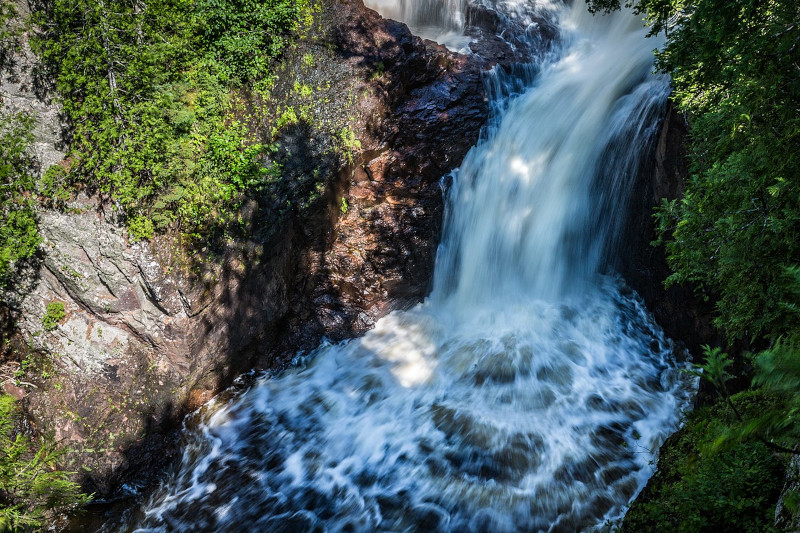
Devils Kettle Falls Facts
- The mysterious, not to mention appealing, Devil’s Kettle Falls constitutes an almost unknown natural wonder. It also remains a mystery that still defies explanation. And who doesn’t love a good mystery?
- This unique waterfall known as Devil’s Kettle Falls remains a central part of the Judge C.R. Magney State Park. It is situated in the state of Minnesota, in the United States.
- The waterfall forms part of the final stages of the Brule River, as it approaches Lake Superior. It is here that a mystery occurs that remains unexplained to this day. Do you find yourself intrigued yet?
Devil’s Kettle Falls Geology
To the naked eye, the Geology of Devil’s Kettle Falls seems unremarkable, though certainly pleasing to the eye.
The waterfall occurs roughly 1.5 mi (2.4 km) before the end of the Brule River. The river drops an impressive 800 ft (244 m) over the course of only 8 mi (12.8 km), before flowing over a unique waterfall.
This flow gets divided by an outcropping of rhyolite (a volcanic rock). Its eastern section plunges nearly 50 ft (15 m) down a two-stage cascade. However, the other portion holds the beginning of the mystery.
Devil’s Kettle Falls Mystery
The unexplained phenomenon we call Devil’s Kettle Falls began perplexing mankind even before the first Europeans arrived on the continent. The Native Americans knew it well.
On the western side of the waterfall, the water swirls down a large hole in the rock. This hole measures approximately 10 ft (3 m) in diameter. No investigator, professional or amateur, has ever been able to determine.
It was once assumed it flowed into a subterranean river, into nearby Lake Superior. However, scientists have investigated, sending everything from ping pong balls to dye, to sensors down the flow.
No sign of any of these has ever been detected anywhere in the world, proving that Nature still keeps her mysteries.
Check out our other articles on Ringing Rocks, Blood Falls, Thors Well

